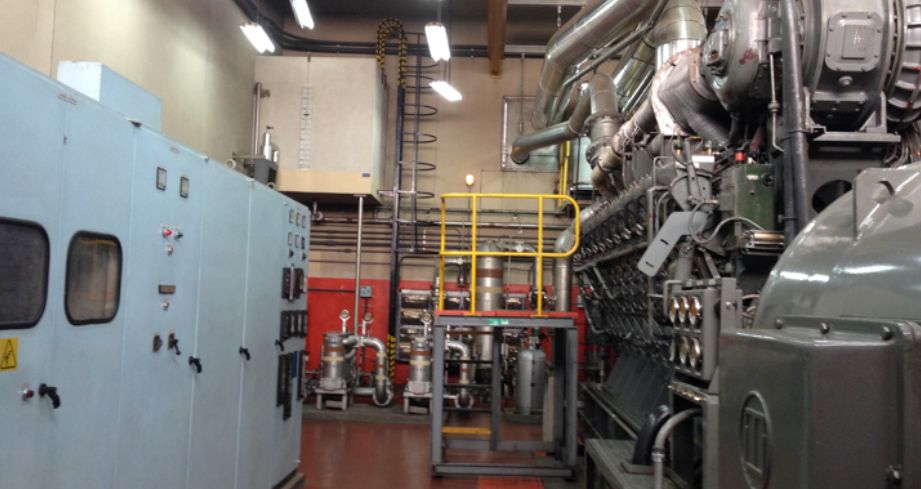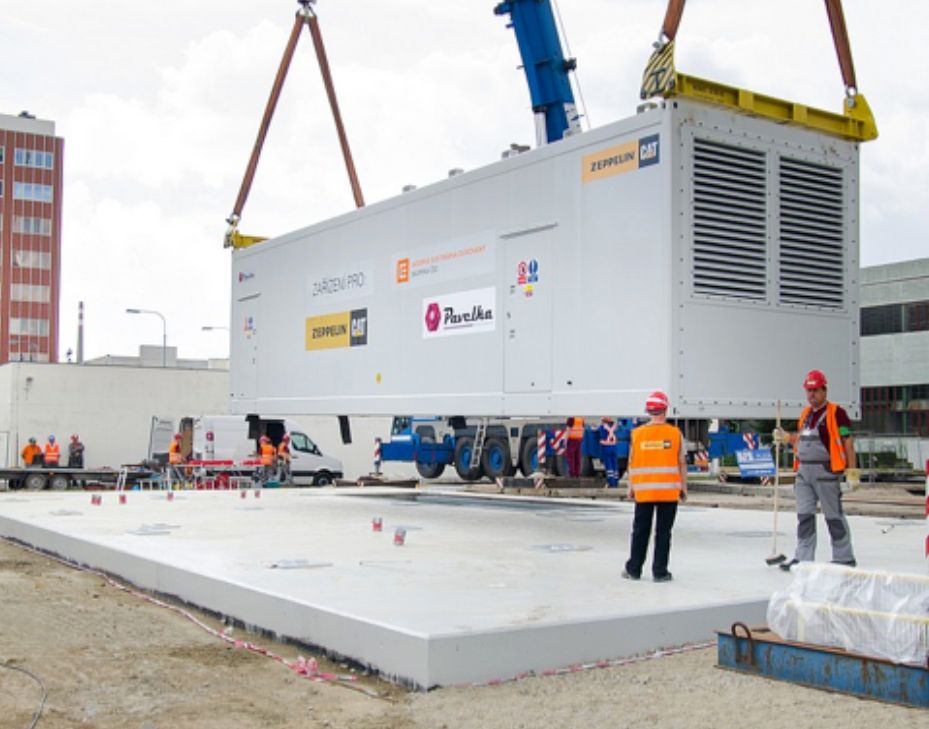

Sign In
Welcome! Sign In to personalize your Cat.com experience
If you already have an existing account with another Cat App, you can use the same account to sign in here
Register Now
One Account. All of Cat.
Your Caterpillar account is the single account you use to log in to select services and applications we offer. Shop for parts and machines online, manage your fleet, go mobile, and more.
Account Information
Site Settings
Security
Impact of 60- to 80-year Design Life Requirements on Emergency Diesel Generators at Nuclear Power Plants
David B. Hedrick
Caterpillar, Inc. Electric Power
Nuclear Emergency Diesel Generators
September 2015
ABSTRACT
This paper will take a closer look at how the evolution of longer-life nuclear power plants (NPPs) impact emergency diesel generators (EDGs) used for station blackout (SBO) support. Extending the life of EDGs from an initial 40-year design life basis to the current reactor design life basis of up to 80 years will present challenges to the owner. We examine the concerns involved with keeping existing EDGs ready to run. There are many lessons to be learned from current regulatory trends and new post-Fukushima seismic and flooding requirements, as well as unique factors an owner should proactively address. This paper will examine potential solutions to address specific current and future challenges in the following sections:
- Background on life extension of nuclear power plants
- Resulting challenges for emergency power generator installations
- Three ways to meet these challenges
- Considerations, advantages and disadvantages of these philosophies
- Conclusions / recommendations
Introduction
Existing nuclear power plants (NPPs) were built with original requirements for 30- to 40-years of design life. These existing NPPs either already have or are now looking at design life extensions of up to 20- to 30-years.
Operators building new NPPs are demanding 60- to 80-years of design life with an expected extension. If you consider that the EDGs/SBOs could have been built several years prior to the NPP coming on line, as well as the need to be ready to run during the decommissioning phase, NPPs could be looking at a range of 70- to 90-years of design life for EDGs/SBOs. Is this obtainable? Is this practical? Can you maintain the reliability for this duration? This lengthy period of time is presenting challenges to existing owners/operators of EDGs/SBOs and posing future challenges to us all. Let’s examine the situation a little closer.
First, let’s take a look at the so-called bathtub curve, which illustrates the increase or decrease in reliability of a product over time. The first part, shown in blue in Figure 1 (on next page), is the decreasing early hour or infant mortality failures. The second part, in orange, represents the constant failure rate or random failures over time. The third part, in green, shows age-related or wearingout failures. When you combine these three types of failures you get an observed failure rate, in purple, which resembles a cross section of a bathtub shape, and hence the name of this type of chart. Nuclear applications generate a probabilistic failure model to determine an estimated and an acceptable or allowable rate of failure, illustrated in red.







Much time and effort is spent in new nuclear projects to address and reduce early-hour failures. Multiple quality checks, numerous verifications and extensive testing are examples of efforts for reducing the likelihood of these types of early-hour failures.
However, the focus of this paper is the end part of the curve, where the observed rate approaches the acceptable level of failure. NPP operators’ plans or long-term asset management programs for handling increasing unreliability and the end of life concerns of an EDG system will be discussed later in this paper. At some point in the future, the perceived reliability will cross over the deemed acceptable limit. Until then, what will operators do? Let’s take a look at the options that an operator could consider.
For an EDG/SBO to live for 70 to 90 years and still remain in an acceptable reliability range, there are three options that quickly come to mind that can be planned and followed. The first choice is for the operator and generator set manufacturer to try to keep the units in operation for the entire duration of the design life. The second option is to replace the units at some point, perhaps mid-life, with newer units. The third option is adding a completely new diesel engine-driven system to the existing infrastructure to supplement the original units. Let’s take a closer look at the pros and cons of each of these three options.
KEEPING EXISTING UNITS OPERATIONAL
Aging is inevitable, and the task of keeping a generator set in peak operational condition can be daunting. This approach consists of proactively performing normal and predictive maintenance at specific intervals in an attempt to keep the actual reliability in an acceptable range. This can be done by renewing, replacing, upgrading and improving specific piece parts in the generator set systems. As an example, we can look at the Prairie Island NPP, where Caterpillar is supplying piece parts for a Cat® D399 engine built in the 1970s. From time to time, there may also be an opportunity to upgrade parts that have been redesigned.
One advantage to this approach is the initial investment is still in a ready-to-run state. Improvements in piece parts can be validated and incorporated into the existing sets. Operators are able to follow well-established, existing processes and procedures.
However, there are some challenges to this approach that can be confirmed by the operators of older NPPs, including obsolescence, supply issues and maintaining an acceptable level of reliability in the entire system.
Over time, many companies and suppliers have changed, with some suppliers or sub-suppliers having gone out of business. This certainly has and will continue to complicate the issue of getting validated piece parts. However, some NPP operators and third-party dedicators have become creative in reverse engineering designs and finding new suppliers. Even so, the situation will not get better over time. It will only get worse and continue to be a costly approach.
Another issue with keeping existing EDGs/SBOs operational is that some countries have a time limit for getting the actual work done before a rule-initiated reactor shutdown is required. As the unit ages, there is usually more work to perform, and in some cases there is not enough time to perform the actual work without getting a special permit or shutting down the reactor.
Some NPP operators have to consider the addition of new swing diesels in order to have enough time to perform the required maintenance work for the existing and aging EDGs/SBOs. This solution can address the time issue, but the costs for this solution are not insignificant, and operators still have to address the existing issues in keeping the generator sets running.
Another point to consider is the cumulative cost of keeping the units running. While no single parts order will be that significant, the cumulative cost to continue moving forward with this solution up until the decommissioning of the NPP may approach or exceed other options.
REPLACE EQUIPMENT IN SITU
The next concept we will review is completely removing the major equipment and replacing it with new EDGs/SBOs. Newer equipment can relieve the operator of obsolescence or supplier issues. New equipment meets new or updated regulations or new plant requirements, such as having more power available for emergency loads. There could be an issue if the new power requirement is such that the equipment cannot fit into the available space in the existing powerhouse, but this is not usually the case since the power density, or kilowatts per square meter, of most modern EDGs/SBOs has increased substantially in recent years.
Most of the cons to this choice center on the time it takes to execute this option. Does the replacement have to occur when the NPP is down? Most refueling opportunities are accomplished in just a few weeks’ time. This really is not a sufficient amount of time to perform the removal and replacement of equipment.
Replacement could be scheduled during an extended outage, such as the mid-life plant refurbishment projects at CANDU-designed reactors, where multiple projects are pursued to extend the life of the power plant.
An example of this approach can be seen at the Embalse Power Plant in Argentina, where the operator will remove the existing equipment and replace it with upgraded systems.
Now let’s explore some additional options dependant on the specific nuclear power plant. It is great if there is sufficient redundancy to replace the generators while the NPP is operational, but if not, an operator can look to use portable backup generators during the removal, installation, commissioning and hand over of the new equipment.
This situation is reflected in a Caterpillar project performed at an NPP in the United Kingdom. One of two battery-charging diesel generator sets experienced a catastrophic failure. Emergency mobile equipment was placed on-site to provide the backup power. The operator took the opportunity to increase the technical requirements – specifically flooding and seismic standards in the wake of Fukushima – went to tender, and selected a Caterpillar-based solution to replace the existing EDGs in situ.
ADD TO EXISTING NPP BY BUILDING NEW EDG/SBO STATION
The final option is adding a completely new building for upgraded EDGs/SBOs. One example is the emergency power system (EPS) updated at a CANDU reactor.
The CANDU EPS system is designed to provide the CANDU reactor unit with the required electrical power needed to perform all safety functions under both operating and accident conditions. It contains two seismically qualified, redundant standby generators, batteries and distribution gear in a reinforced building.
Another example is a more modular approach used at two NPPs operating in the Czech Republic. Here, the modular approach resulted in a quicker delivery and lower cost compared to a more traditional permanent brick-and-mortar civil structure.
There are several pros and cons as we look at this option. New equipment can alleviate any obsolescence or supplier issues, while simultaneously increasing reliability. With a blank sheet, NPPs can begin with a design that can include the latest EDG/SBO strategies. It can incorporate lessons learned, new regulations and new requirements – in the selection of the equipment as well as the building design. This can include new seismic and flooding requirements.
Also, the construction can occur as the nuclear plant continues operations. The only time the plant would need to shut down is for the final ties into the existing system, which can usually be done during a scheduled refueling period. Utilizing the modular approach can result in an even shorter time from concept to installation and final handover.
One issue with this approach is space. Some NPPs do not have enough ideal space around the reactor to install a new system and building. New procedures and processes must be created in the design modification package. Also, as with any new system or design, training has to be considered. While cost is certainly an issue for all options, this option can entail the largest one-time cost. However, this one-time cost can be rationalized by taking a longer-term view on costs and reliability.
COMPARISON OF THE THREE OPTIONS
From the perspective of current operating NPPs, all options have their pluses and minuses. One might gravitate toward keeping existing EDGs/SBOs running, as this would appear to be the lowest cost option. NPPs can choose the status quo and replace old parts with new parts to keep things moving along. However, internal and external forces may require the owner to take a closer look at the other two options, as the balance between costs and reliability can change over the course of time. Let’s look at the individual costs for each option.
Estimating the individual costs for the various options in any given year may make some options cost-prohibitive. It is assumed that the costs to maintain existing generator sets will grow over time.
From the highest single-year cost to the lowest single-year cost, the options rank as follows:
- New build – traditional
- Replacement in situ
- New build – modular replacement
- Swing diesel
However, if you look at the cumulative cost, the story looks a bit different. At some point in time, the cumulative cost to maintain existing units rises above the cumulative cost to replace. Of the various options, the swing diesel is actually the most costly over the long term. This is no surprise, as it really only addresses a time issue, and this comes at a cost. The modular approach has a low cumulative cost, and it has a shorter time period for crossing over the keep running line as shown in the next graph.
Let’s review the bathtub curve for reliability. Again, for illustrative purposes the bathtub curve has an initial decreasing slope, remains fairly flat through the mature part of life, and then increases through the end of life.
In a situation where the NPP elects to replace the generator sets, the bathtub curves for reliability would be stacked side-by-side.
As you can see, it makes the most sense to replace the existing unit with a new unit and maintain reliability under the acceptable failure rate for a long time.
CONCLUSION AND RECOMMENDATION
How hard is it to get parts? What is the reliability of current EDGs/SBOs and what is it predicted to be moving forward? What is the health of your supplier base? Have new regulations forced new requirements? How long does the plant intend to continue operations? These are just some of the many factors that guide NPP operators to take a closer look at maintaining existing units, replacing in situ, constructing a new building or adopting a modular approach.
An ongoing analysis of the costs to maintain, the impact on reliability, the health of suppliers and the effects of replacement is needed at every operating nuclear power plant. There will be a tipping point when replacement makes sense in terms of cost, reliability or both. The key for an operator is to determine if this tipping point will occur within the lifetime of the NPP.
Current design expectations for operating diesel generator sets for at least 60 to 80 years will only increase the chances of that tipping point occurring during this operating window. Decreasing reliability coupled with the increasing cost to keep running will drive operators to explore various options to address these two issues.
Proactive planning is the key for keeping ahead of the curve, not only for existing nuclear power plants, but also as a design input for future nuclear power plants. Designing buildings for the easy replacement of equipment or purposely leaving space for future construction that includes places to tie into existing systems can alleviate some of the costs down the road.






